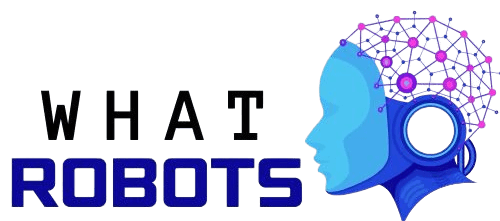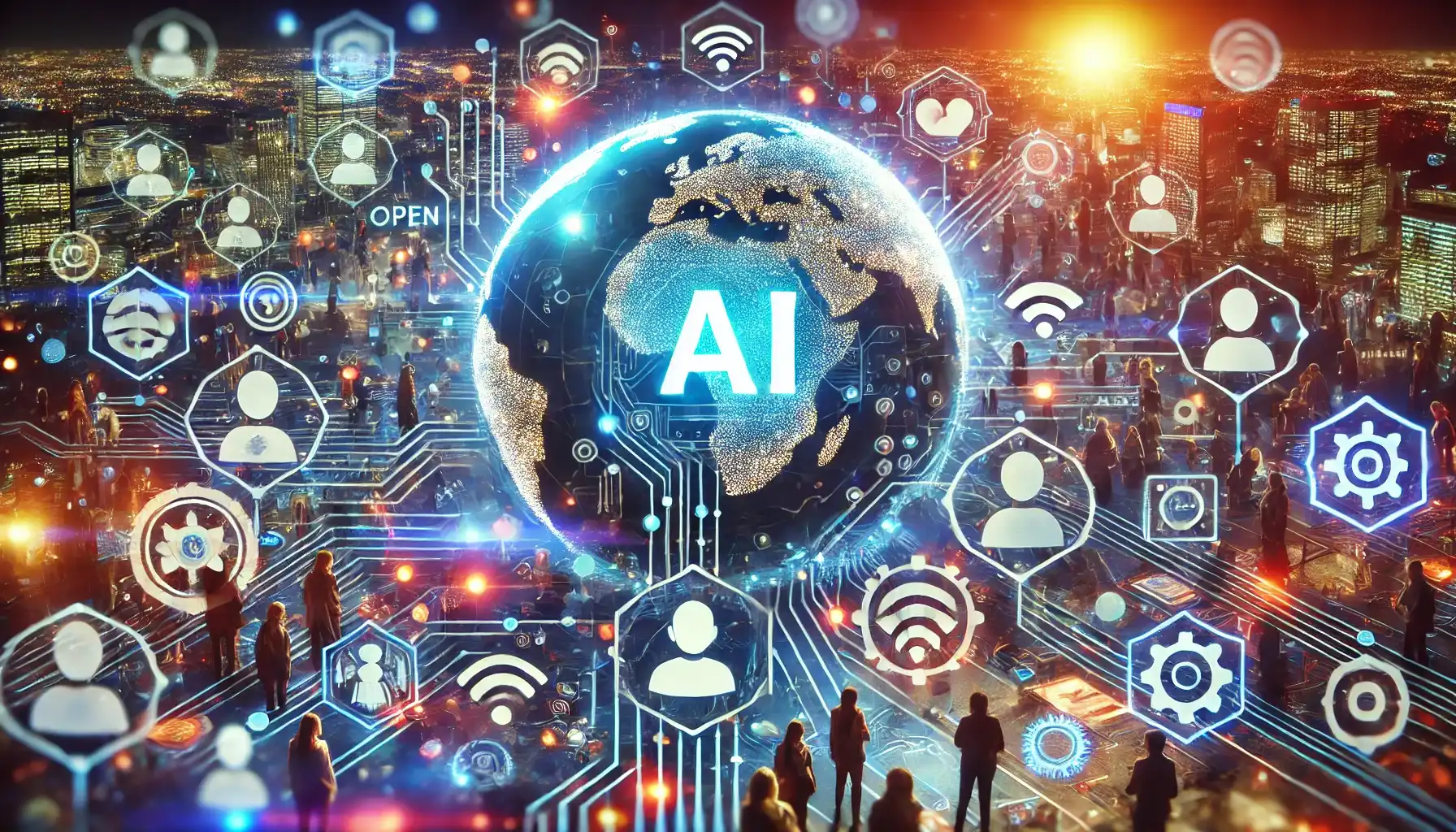Artificial intelligence (AI) is transforming how we live, work, and interact with technology. From predictive analytics and natural language processing to self-driving cars and personalized recommendations, AI is revolutionizing every industry it touches. But behind the scenes of these cutting-edge applications is a powerful movement driving accessibility, collaboration, and innovation: open artificial intelligence. In this article, we will explore what open AI entails, its implications for businesses and individuals, and how it fosters a more inclusive, transparent future.
Table of Contents
What Is Open Artificial Intelligence?
Open artificial intelligence refers to the practice of making AI research, software, frameworks, and tools freely available for public use and collaboration. It extends the principles of open-source software to the realm of AI, allowing developers, researchers, and enthusiasts worldwide to contribute, modify, and distribute AI models and solutions without restrictive barriers. This open approach:
- Promotes Collaboration: By sharing code and research findings, AI practitioners can work together to accelerate progress.
- Encourages Transparency: Open access to AI models and datasets allows the wider community to understand and assess how these technologies function.
- Fosters Innovation: With fewer gatekeepers, anyone with an internet connection can experiment and build solutions on top of existing work.
Why Openness Matters
AI has the potential to influence healthcare, finance, manufacturing, transportation, and more on a global scale. However, when AI research and development are locked behind proprietary barriers, progress is constrained to a select group of well-funded companies and institutions. By embracing openness, the AI community can capitalize on collective knowledge, ensuring that breakthroughs happen faster and that potential solutions to pressing world problems—such as climate change, disease control, and resource management—are addressed more efficiently.
The Benefits of Open AI for Businesses
Many businesses today are turning to open artificial intelligence for a competitive edge. Here’s why:
1. Rapid Experimentation and Reduced Costs
- Free Access to Tools and Frameworks: Open AI libraries like TensorFlow, PyTorch, and scikit-learn provide robust, production-grade solutions without the cost of proprietary software licenses.
- Lower Development Costs: Because open-source tools are free to use, startups and small businesses can prototype and deploy AI-based solutions without hefty initial investments.
- Community-Driven Support: Thousands of contributors worldwide offer ongoing updates, bug fixes, and support for AI frameworks, helping businesses keep up with the latest innovations.
2. Enhancing Product and Service Offerings
- Customization and Flexibility: With open-source AI code, companies can adapt models to their specific needs, ensuring tailored functionalities.
- Faster Iteration: By leveraging already-existing solutions, teams can significantly reduce development time, launching or refining AI-powered products quickly.
- Increased Competitive Advantage: By integrating advanced AI features that previously required specialized experts, businesses can offer superior user experiences.
3. Transparency and Trust
- Auditable Systems: Open models allow stakeholders to review how an AI makes decisions, fostering trust among customers and regulatory bodies.
- Ethical Best Practices: Open AI communities often encourage discussions around bias, fairness, and responsible deployment, enabling businesses to adopt ethical standards more effectively.
How Open AI Empowers Researchers and Developers
Open artificial intelligence revolutionizes how AI practitioners approach research and development.
1. Democratizing Access to Cutting-Edge Research
Academic papers on AI breakthroughs are now frequently published under open licenses, accompanied by shared code repositories. This accelerates the dissemination of knowledge and helps researchers:
- Build on Each Other’s Work: Redundant efforts are minimized when models and methodologies are shared openly.
- Achieve Faster Progress: Researchers can replicate experiments with ease, validating findings and pushing boundaries collectively.
2. Streamlining Collaboration Across Disciplines
AI by itself is just one part of the puzzle. Complex challenges like climate change, disease modeling, and robotics require a confluence of multiple disciplines—physics, biology, statistics, engineering, and more. Open AI facilitates cross-disciplinary collaboration by:
- Breaking Down Silos: Professionals from different fields can easily integrate AI into their research if they have free access to tools and data.
- Facilitating Large-Scale Projects: Global teams can pool resources and computing power to tackle major challenges, sharing tools and methodologies.
3. Encouraging Community-Led Innovations
Open AI communities on platforms like GitHub, Kaggle, and dedicated AI forums foster continuous learning and communal growth:
- Open-Source Projects: From neural network architectures to specialized AI toolkits, there’s a constant stream of new projects contributed by passionate developers.
- Hackathons and Competitions: Global competitions often revolve around open datasets and AI frameworks, encouraging participants to experiment and hone their skills while addressing real-world problems.
Challenges and Concerns in Open Artificial Intelligence
Despite its potential, open AI also brings certain challenges and ethical dilemmas.
1. Data Privacy and Security
- Exposure of Sensitive Information: Open AI can sometimes involve making datasets public, which may inadvertently include sensitive user information.
- Risk of Malicious Use: With open access to advanced AI models, bad actors might exploit these tools to engage in unethical activities, such as generating deepfakes or orchestrating cyberattacks.
2. Ensuring Responsible Deployment
- Bias and Fairness: Even open AI models can inherit biases present in their training data. Addressing issues related to discrimination and unfair treatment is critical.
- Compliance with Regulations: Organizations utilizing open AI must adhere to local and international regulations—such as GDPR in the EU—to manage data responsibly.
3. Sustaining the Open Ecosystem
- Funding and Maintenance: Open-source AI relies heavily on community and volunteer contributions, which can be challenging to sustain without reliable funding.
- Balancing Commercial and Open Values: As businesses monetize open AI projects, tensions may arise over licensing, profit sharing, and code distribution.
How to Get Started with Open AI
Whether you’re an entrepreneur, data scientist, or tech enthusiast, there are many ways to begin your journey with open artificial intelligence.
1. Leverage Free AI Frameworks
Popular open-source AI frameworks include:
- TensorFlow: Backed by Google, TensorFlow provides libraries for building and deploying deep learning models.
- PyTorch: Known for its dynamic computation graph and user-friendly approach, PyTorch is a favorite among researchers.
- scikit-learn: A classic machine learning library for Python, offering straightforward implementations of popular algorithms.
2. Engage with Online Communities
Joining AI forums and platforms can accelerate your learning curve:
- GitHub: Explore open-source AI projects, contribute to codebases, and learn from others’ work.
- Kaggle: Participate in AI and machine learning competitions to hone your skills on real-world datasets.
- Reddit’s r/MachineLearning: Discuss the latest research papers, watch tutorial videos, and ask questions to a global community.
3. Contribute to or Initiate Open Projects
If you have an AI-related idea or project:
- Create a Repository: Upload your code to GitHub, tagging it for discoverability so that others can find it.
- Invite Collaboration: Encourage peer review and open contributions to refine and expand your project.
- Document Your Work: Provide clear instructions, tutorials, and explanations to lower the entry barrier for new contributors.
The Future of Open Artificial Intelligence
As AI becomes increasingly integrated into our daily lives, the push for openness will likely intensify. Here are some predictions:
- Greater Funding for Open AI Projects: Governments, nonprofits, and private donors may invest more in open research to address societal challenges, such as healthcare analytics, environmental conservation, and education reform.
- Stronger Regulatory Frameworks: Policymakers may introduce regulations that mandate the transparent and fair use of AI, especially in critical sectors like finance and criminal justice.
- Cultural Shift Toward Collaboration: We can expect a rise in open AI collaborations between academic institutions and commercial entities, aligning public and private interests in solving global problems.
Addressing Ethical and Societal Concerns
As open AI matures, there will be a greater emphasis on AI ethics—ensuring that these technologies do not exacerbate socioeconomic inequalities or infringe on civil liberties. Community-led initiatives that integrate ethicists, policymakers, and technologists can help guide open AI in a responsible direction.
Key Considerations for the Future:
- Bias Mitigation: Continued research into diverse, representative datasets and fairness-oriented algorithms.
- Sustainability: Environmental impacts of large-scale AI training must be evaluated and reduced.
- Human-Centered AI: Technology should serve humanity’s best interests and respect cultural, regional, and individual nuances.
Conclusion: A Call for Collaboration and Transparency
Open artificial intelligence is more than a technological trend; it is a philosophy that champions inclusivity, transparency, and collective progress. By breaking down barriers and empowering a global community of developers, researchers, and innovators, open AI stands poised to solve some of the most complex challenges of our time. Yet, with this power comes responsibility—ethical, regulatory, and societal considerations must guide the ongoing development of AI tools and solutions.
As businesses, researchers, and everyday enthusiasts adopt open AI principles, they contribute to a future where technology benefits everyone. From healthcare and education to climate change and beyond, open artificial intelligence offers an unprecedented opportunity to harness the world’s collective intelligence for the greater good.
If you’re ready to explore the fast-growing frontier of AI, join an online community, experiment with open-source frameworks, or embark on your own open AI project. The possibilities are endless—and the rewards, for both individuals and society at large, are too significant to ignore.
Further Reading and Resources
For authoritative insights and best practices on AI research, consider exploring resources from Stanford Artificial Intelligence Laboratory (SAIL).
For insights about meta AI technologie check out this article

